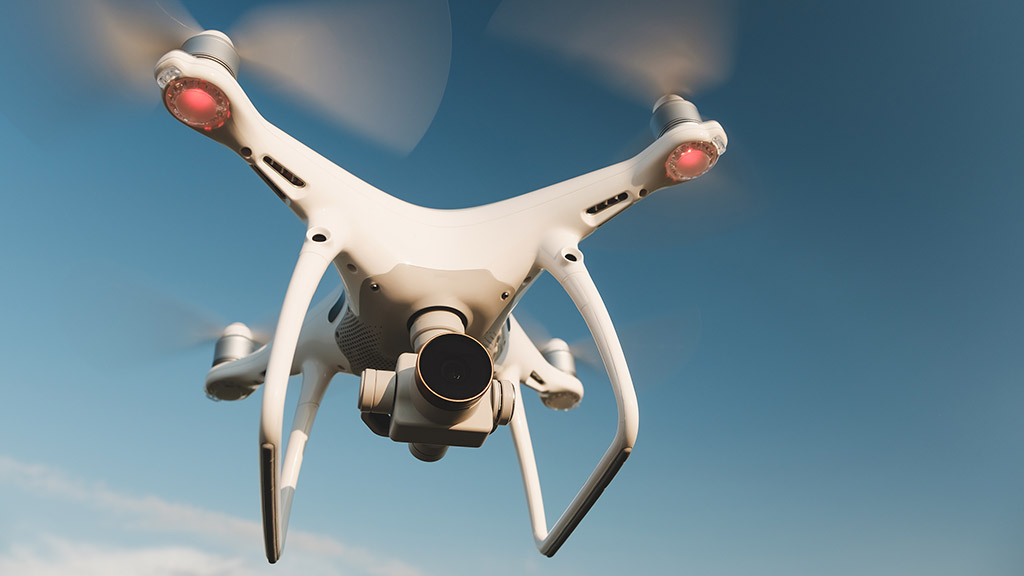Robots and drones, on the front line in the battle against COVID-19
The Military Emergencies Unit (UME) has now approved the use of drones to provide disinfection against coronavirusOver 2,000 Chinese hospitals are using UV disinfection robots to kill specific viruses

On the same afternoon that Spain announced the state of emergency, a video showing police in Madrid using drones to warn citizens to stay at home went viral. Drones were thus enlisted in the battle against coronavirus from day one and their role, like that of robots, has gained increasing importance. "Robotics have been used in healthcare for over thirty years, but now their presence has come to the fore because of the wide range of functions that robots are able to perform without exposing people to risk," said Pierre Bourdin Kreitz, professor at the UOC Faculty of Computer Science, Multimedia and Telecommunications. These functions include cleaning, dispensing medication, disinfection of hospitals and other centres, mass PCR testing and, according to Kreitz, "even food and other product delivery", in reference to FedEx's courier robot Roxo, or Amazon's Scout. Other types of robot include Moxi, designed to reduce the workload of nursing staff by collecting and delivering bed linen and supplies; UVD robots, which use ultraviolet light to kill harmful microorganisms and are currently being used to disinfect against COVID-19 in over 2,000 hospitals in China; or the drones previously used for agricultural tasks now being deployed by the Spanish Military Emergencies Unit (UME) to disinfect large areas against coronavirus as part of "Operation Balmis".
But these are not the only functions that drones can bring to the battle against the current pandemic. Jordi Sandalinas, lawyer, communicator and course instructor of the UOC's seminar on Drones and Law, explains that drones also help to locate and capture information in the form of data: "They should be able to do everything that the sensor adapted to the hardware in question allows them to do. So a drone equipped with the right sensor should be able to visualize biochemical parameters". In fact, so-called "pandemic drones" are already beginning to be developed. According to The Robot Report, these drones are capable of detecting infectious conditions in multitudinous spaces using heat sensors and smart systems that monitor body temperature and heart rate, among other parameters.
Artificial intelligence, the first system to provide early warnings of a potential focus of infection in Wuhan on 31 December 2019, is also being applied in the battle against coronavirus. As Bourdin explains, analysis of epidemiological data generates data models and simulations that help scientists understand the evolution of a pathology and its dispersion among the population. AI is also making it possible for the Internet Computing & Systems Optimization (ICSO) research group at the UOC's Internet Interdisciplinary Institute (IN3), together with the company Fhios Smart Knowledge, to develop intelligent algorithms to optimize the logistics of collecting healthcare material produced altruistically by individuals and delivering it to hospitals.
The cost of robotics without ethics
Experts believe that the tide of technological progress – which is enabling us to reduce risks for workers on the front line of the pandemic – is unstoppable. At the same time, they warn that certain ethical controls are needed to prevent technological progress from becoming unmanageable. "We are at a moment that requires urgent answers, faced with inevitable pressure to respond. But we also need to incorporate certain controls that extend beyond the current emergency," said Bourdin, who believes that the decision chains related to the technology to be used against COVID-19 must include "philosophers, historians, and specialists from different fields of engineering, to encourage reflection and avoid disastrous consequences in spite of good intentions. "We sense danger, and this makes us prepared to accept serious restrictions of freedom that could have negative consequences in the future," he warned.
According to Jordi Sandalinas, "human beings' most important and valuable possession is the right to life, which implies the legal right to protect indiscriminately, and in that context, any technology dedicated to saving lives is welcome". However, he agrees with Bourdin in emphasizing that certain limits must not be exceeded. As an example, Sandalinas cites the use of drones for the detection of people. This, he says, "must be supported by an action protocol in line with the law. The technology involved must be addressed and regulated by ethical and moral values. We cannot talk about 'detection of people' as if we were talking about 'detection of hostile elements'. Everything must be studied to the millimetre". Sandalinas exhorts us not to neglect our fundamental right to privacy and personal data protection, as well as our right to life and personal freedoms.
Bourdin, on the other hand, reminds us that all progress in robotics or artificial intelligence should merely provide support: "Under no circumstances can a robot or an algorithm replace a person. The objective of these technologies is to support healthcare workers, allowing them more time to devote to improving the quality of the care they provide. One lesson to be learned from the current crisis is, without a doubt, the need for staff in the health system and public services in general."
Press contact
-
Editorial department
